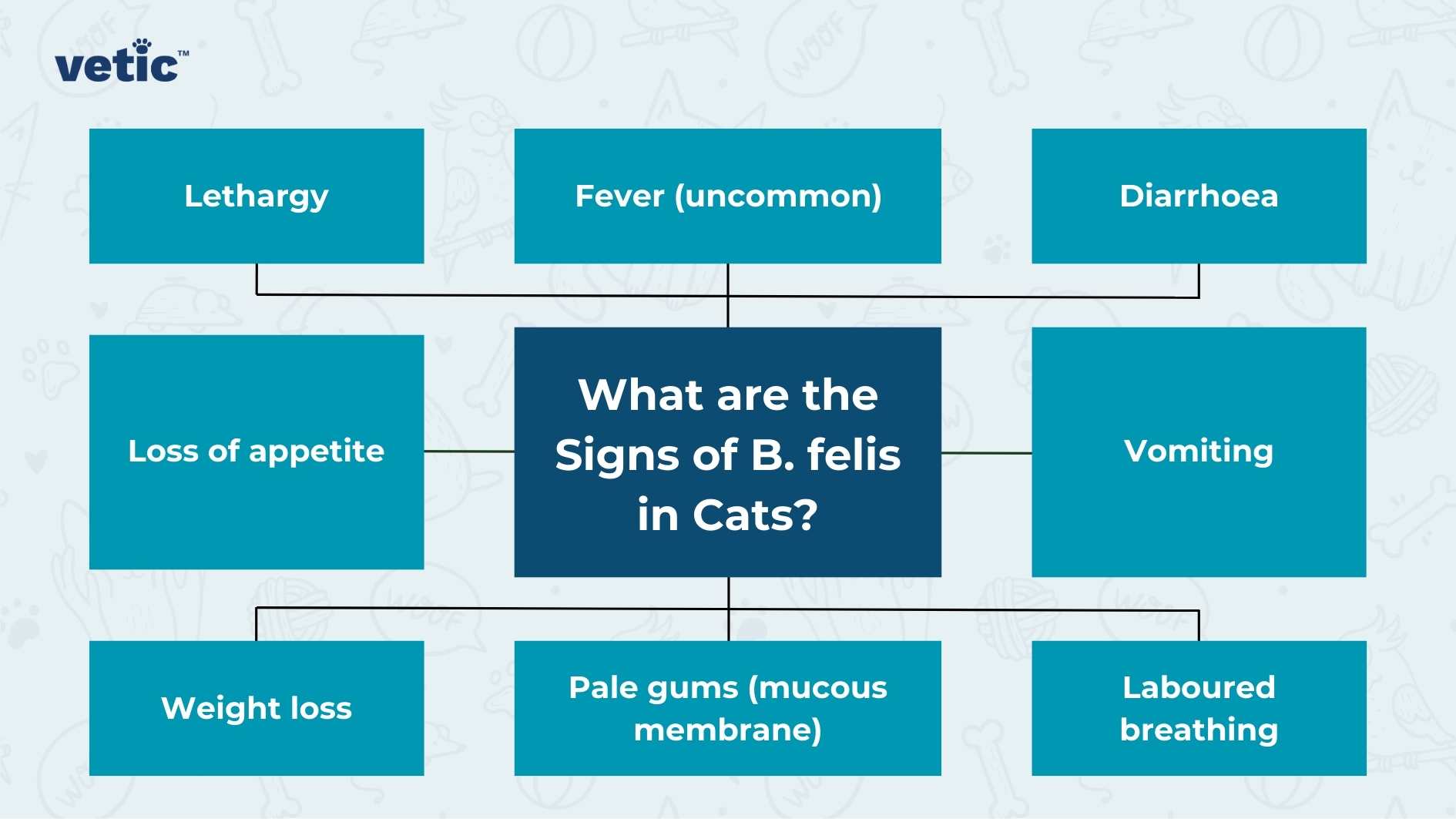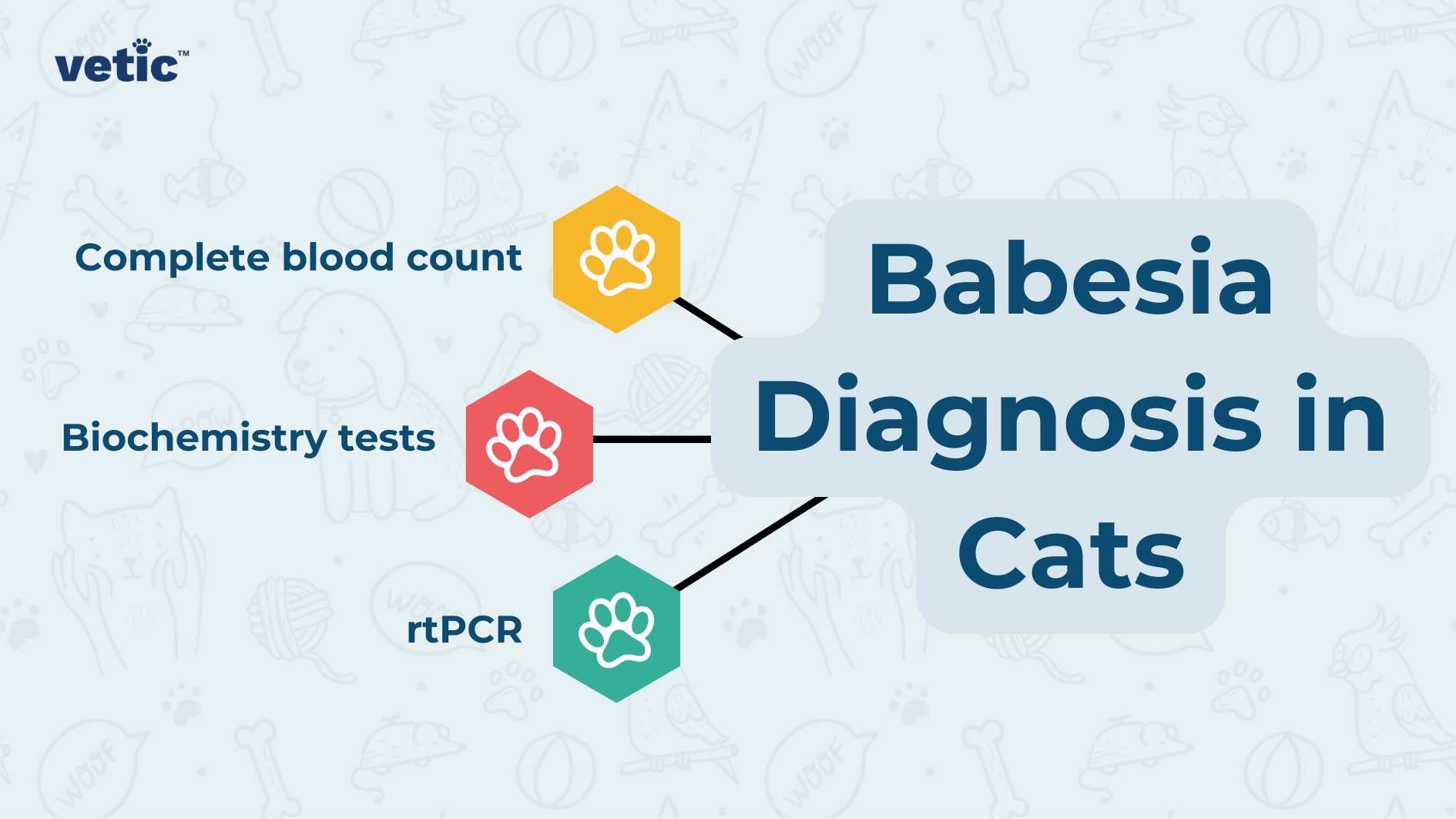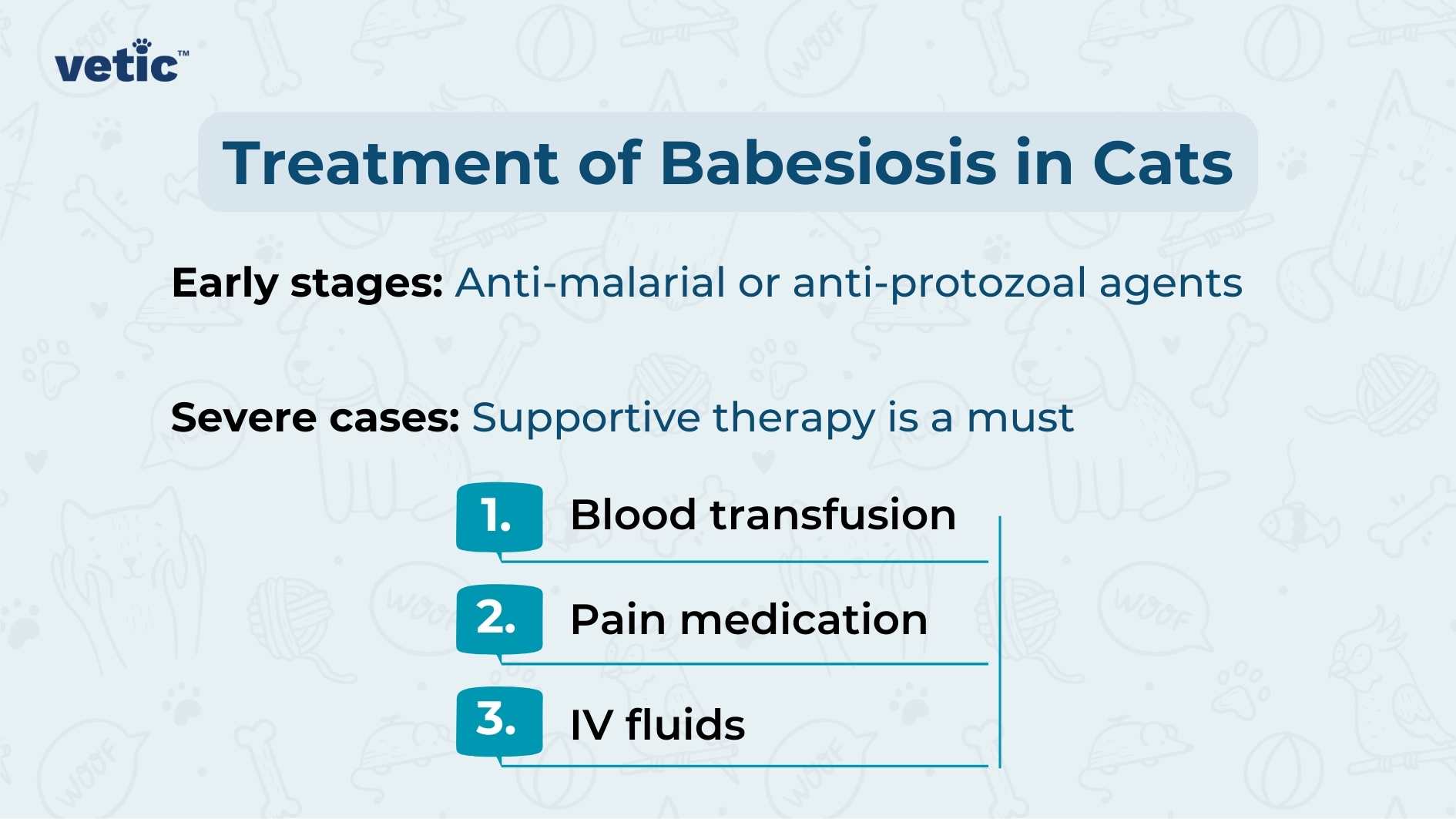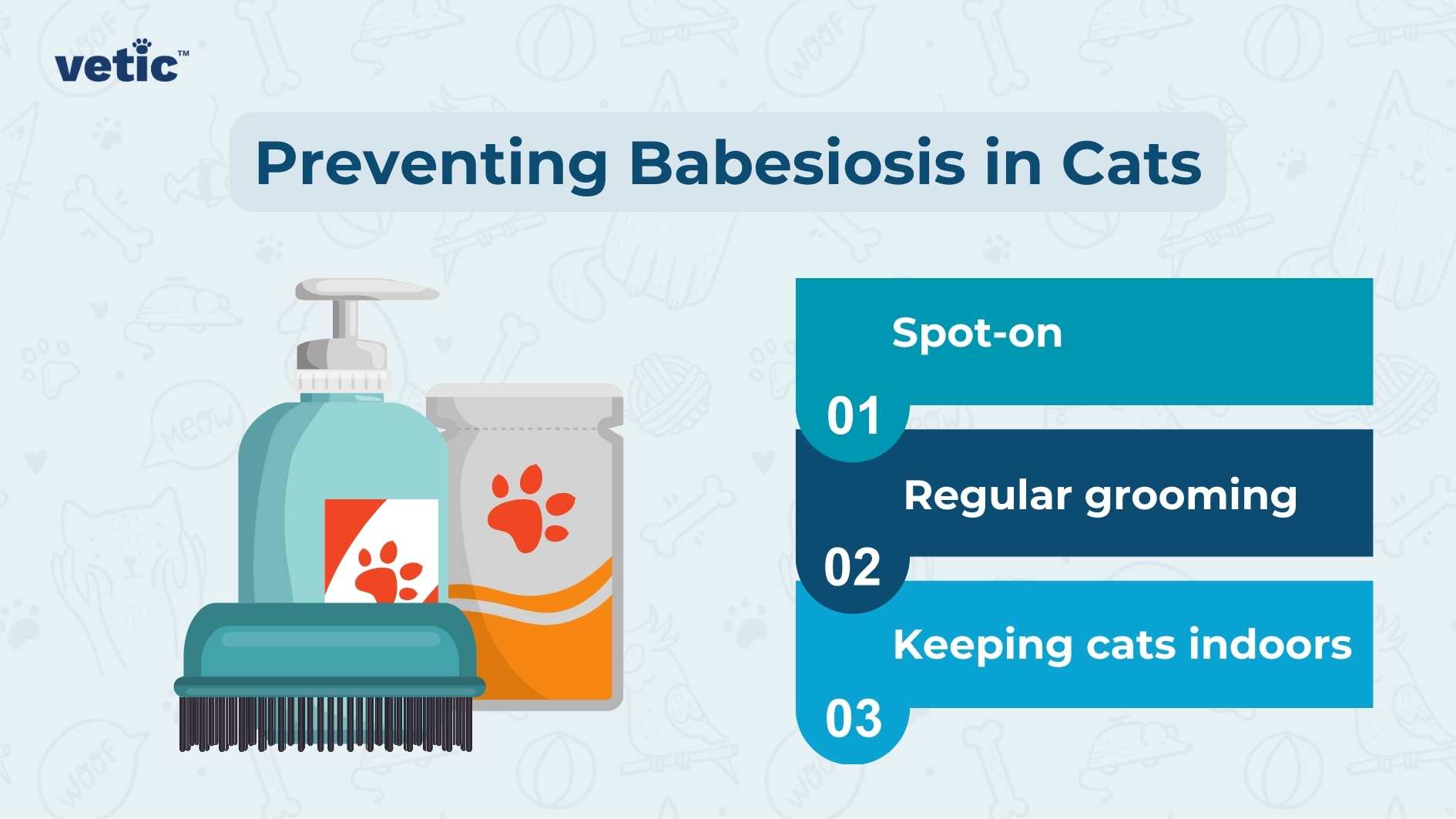Babesiosis is a serious tick-borne disease in cats. It is caused when the infected tick bites a cat and transmits a protozoan called Babesia felis or B. felis. Babesia in cats has become quite common in India due to the prevalence of ticks and the lack of preventive measures.
The tick ingests the parasite during the feeding stage and once the tick bites the cat B. felis is released into the cat’s bloodstream. Once the protozoan is inside, the parasites can attach to the RBC and replicate. The signs of B. felis in cats can develop within a week.
What are the Signs of Babesia in Cats?

Tick-borne diseases such as babesiosis caused by B. felis can become prominent 1-2 weeks after the initial bite. Signs of B. felis infection in cats can include –
- Lethargy
- Loss of appetite (anorexia)
- Weight loss
- Pale gums (mucous membrane)
- Laboured breathing
- Vomiting
- Diarrhoea
- Fever (uncommon)
All cats do not show all 8 signs of babesiosis in cats. Some cats will only show minute loss of appetite and weight loss along with mild anaemia.
However, if your cat is showing more than one of the above-mentioned signs, you need to consult a veterinarian.
What Causes Babseiosis in Cats?
Babesia in cats spreads through tick-bites. Bites, scratches and blood transfusions from an infected cat can spread B. felis to a healthy cat.
How is Babesia Diagnosed in Cats?
It is difficult to diagnose B. felis without diagnostic testing. However, it is crucial that your veterinarian examines your cat’s overall health to assess the seriousness of the situation. They will take a thorough medical history including your cat’s vaccination status, blood transfusion history and recent bites/scratches.

Typically, a veterinarian will also recommend the following tests –
- Complete blood count
- Biochemistry tests
- rtPCR
Completing all tests is necessary since a blood-borne disease such as babesiosis can also affect the liver and kidney function of a cat. The doctor will recommend the proper course of action after considering your cat’s overall health as per the recent test reports.
What’s the Treatment of Babesiosis in Cats?

Babesia in cats is usually a stubborn infection and it requires a carefully tailored protocol. The treatment consists of a mix of anti-malarial or antiprotozoal agents with necessary supplements to keep the cat’s haemoglobin level normal.
In more serious cases, supportive therapy is a must. That may include blood transfusions, pain medication, and IV fluids.
The anti-malarial or antiprotozoal medication used to treat Babesia felis infection in cats is highly toxic. It should be given in the prescribed dose at the recommended frequency. If you miss a dose or accidentally administer more than one dose, you should call your veterinarian immediately.
How Can You Manage B. felis infection in Cats?
The duration of recovery depends on the case. Most cases require multiple doses of medication given several weeks apart.
rtPCR reports can tell you about the level of infection in the cat’s blood. Many of the cats who receive timely treatment live a healthy and long life.
Without treatment, a cat can experience complications such as kidney and liver issues, respiratory distress and other long-term effects of anaemia.
All cats who recover from babesiosis will carry the protozoa throughout their lives. They require constant monitoring and biannual blood tests to ensure the disease is in control.
How Can You Prevent Babesia in Cats?

The only way to prevent babesiosis in cats is by keeping ticks away from your cats. Apply spot-ons every month even if your cat doesn’t step outside. If you have dogs, give them tick-preventives as well.
When you take your cat out or visit the clinic, ensure the environment is tick-free.
Do not let your cat roam outside if they are an indoor kitty. Preventing bites and scratches from infected cats can protect your cat from B. felis.
